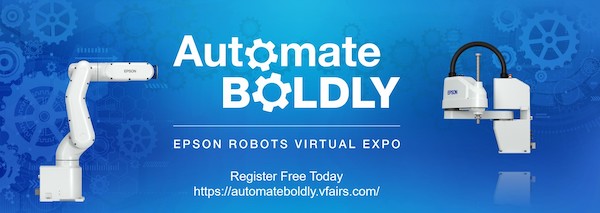
Automation strategies: Impactful manufacturing insights for a changing industry
Over the past decade industrial manufacturers have been pressed to make smaller and smaller products, in higher volumes, with greater flexibility, all at a reduced cost.
Automation has been a central enabler of this trend, helping the industry to achieve production goals and meet business objectives.
Over the past year the COVID-19 pandemic has not only accelerated these trends, but also exposed new market forces that are dramatically impacting the manufacturing industry as we know it.
• Onshoring: Accelerating risk management. This past year, global supply chains have been pressed to the limit. First, factories shut down as a direct consequence of the pandemic. Then the tables turned as demand for components and finished products increased and outpaced supply.
These fluctuations have created risks not only to business sustainability and health, but also risks to national security in areas like laboratory sciences and pharmaceutical production. As companies look to the future, they are now being forced to be adaptable, flexible and innovative with their manufacturing inputs and processes.
• Re-Imagination: Adapting to a “new normal” in manufacturing. As social distancing mandates forced workers to spread out, manufacturers’ ability to hit production targets took a hit. Automation was subsequently brought in to fill the gaps.
The result was not only improved throughput, but also improved quality control at a reduced cost of production. Looking forward, this is a trend that will continue well beyond the pandemic, with a recent survey indicating that 2/3 of global firms are now doubling down on automation (The Economist, 1/16/2021).
• Simplicity: An enabler for market expansion. An interesting segment of the manufacturing market are companies and industries who are new to automation. For example, many small businesses have come to realize that they now have access to automation tools that didn’t exist five years ago.
Regardless of the size or industry, these new entrants are looking for simple solutions, both in terms of systems development and implementation.
As an influx of new automation participants enter the industrial automation space, so do the questions. Those who have either never entertained automation or who perhaps sat on the sidelines are now asking themselves, “how do I get started”? The wide expanse of the industry and its technologies can often feel daunting and can stall forward progress.
To help companies overcome this barrier, we frequently point customers to a simple step-by-step approach that helps companies focus in on five key areas of preparation for automation success.
1. Clearly define the reason for automating. First and foremost, make sure your organization is aligned as to the reason or reasons for automating. It may be cost or improving production throughput or quality control. Whatever the reason, have a focused objective and drive towards it.
2. Define and document your current process. Even if you are not planning on automating, documenting your current process is an incredibly valuable step. If you don’t ultimately automate, you will have done yourself a huge service by archiving your process for future on-boarding or change management.
If you do plan on automating, this step will help identify the areas that are ripe for process improvement and lay the groundwork for how to get there.
3. Identify your requirements. Requirements don’t start with technologies. They start with understanding what you need to achieve an end goal. Your primary automation requirements (speed, precision and payload) are all intertwined and will impact one another. Knowing how these requirements prioritize for your project helps to set expectations.
4. Identify the automation components you need. It’s easy to go straight to this step first, but that is a big mistake. Clarifying goals and requirements helps to crystalize whether a specific end of arm tooling is required, or if a SCARA robot is needed or a 6-Axis.
All prior steps are great areas to leverage professional consultation, either from a manufacturer or system integrator. This fourth step though is one that truly benefits from experience.
5. Discover who will do the work. This is where the proverbial “rubber meets the road” comes into play. Some companies have internal automation support teams who will design, engineer and build a work cell. Often companies leverage system integrators who bring a vision to life. Either way, never be afraid to ask for help. The automation community is here to help.
As the world emerges from the grip of the pandemic, one thing is for sure: manufacturing will not be the same. Companies from traditional and non-traditional automation environments are looking to the future and re-imagining how to advance their manufacturing operations in our new “post-pandemic” world.
With so many changes impacting the industrial manufacturing market, Epson has designed “Automate Boldly,” a virtual experience for both new and experienced automation professionals to gain business-ready industry insights, discover impactful solutions and find supportive guidance.
We encourage participants to come with their questions and engage with our product, sales and engineering teams. This is an event that seeks to meet manufacturing professionals where they are at, helping them to get “one-step closer” to their desired state.
To register, visit https://automateboldly.vfairs.com/.
—
Written by Scott Marsic, Group Product Manager, Epson Robotics
